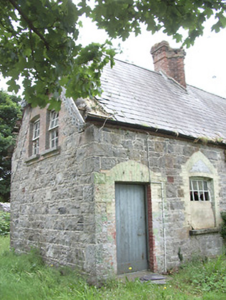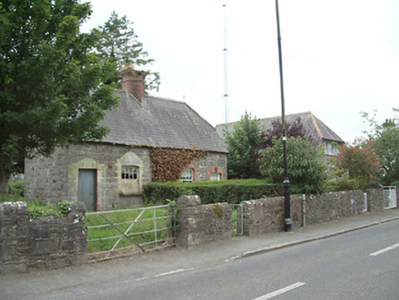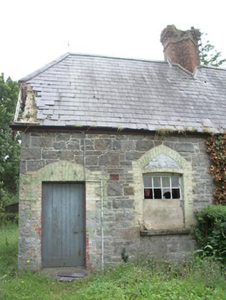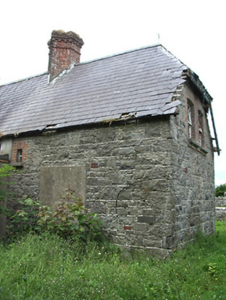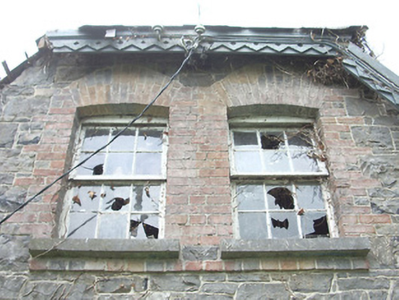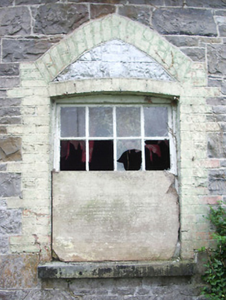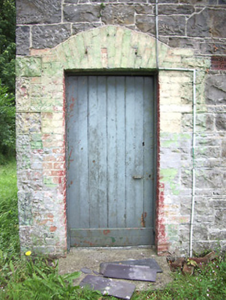Survey Data
Reg No
13312028
Rating
Regional
Categories of Special Interest
Architectural, Historical, Social
Original Use
Worker's house
Date
1860 - 1880
Coordinates
220355, 268588
Date Recorded
21/07/2005
Date Updated
--/--/--
Description
Semi-detached two-bay single-storey former estate worker's house with attic storey, built c. 1870. One of a group of four. Now derelict. Half-hipped natural slate roof with overhanging eaves, (shared) diagonally-set hexagonal red brick chimneystack having moulded cornice and string courses, cast-iron rainwater goods, and decorative timber barge boards to gable (east). Snecked rock-faced stone walls. Segmental-headed window openings with red brick block-and-start dressings, stone sills, and six-over-six and eight-over-eight pivoting pane metal frame windows. Square-headed entrance opening with timber battened door and red brick block-and-start dressings. Rear opening now blocked up. Garden to front (north) and rear (south) with random rubble stone boundary wall, wrought-iron pedestrian gate, and rounded caps to gate piers with replacement vehicular gate. Located to the east end of Ardagh.
Appraisal
This attractive house is one of a group of four semi-detached houses to the east end of Ardagh. Although now sadly derelict, this building retains its early form, character and its early fabric. They form a coherent group, which contributes positively to the streetscape, and to the character of Ardagh. The contrast between the gray limestone masonry and the red brick dressings to the openings creates a visually appealing composition. The well-detailed chimneystack on hexagonal-plan and the steeply pitched half-hipped roof creates an interesting silhouette. This building may have been constructed as part of the extensive works carried out by the architect James Rawson Carroll (1830 – 1911), for Sir Thomas Fetherston (between c. 1860 – 1865) in order to improve the village as a memorial to his uncle, Sir George Fetherston. It is one of a number of houses/buildings, of varying designs, in the village of Ardagh that collectively represent one of the most interesting collections of its type in north Leinster.

